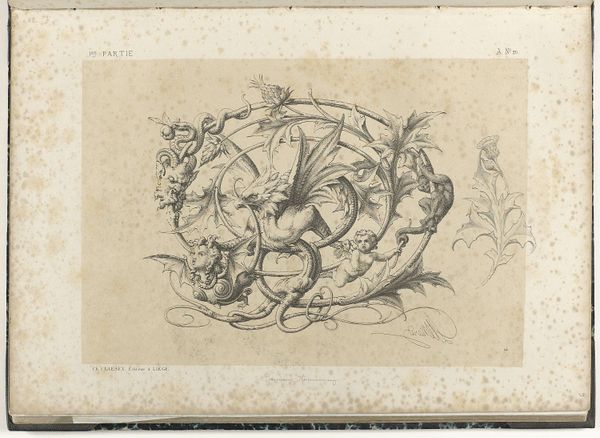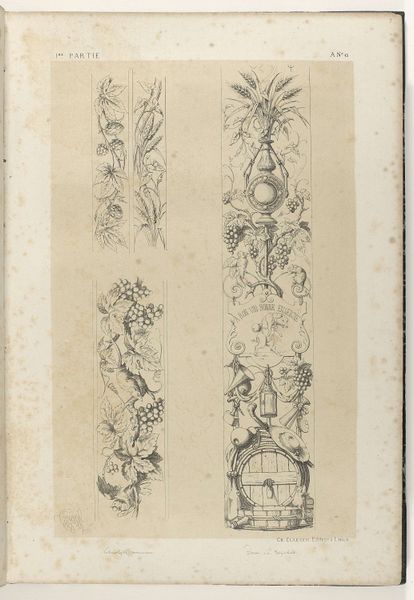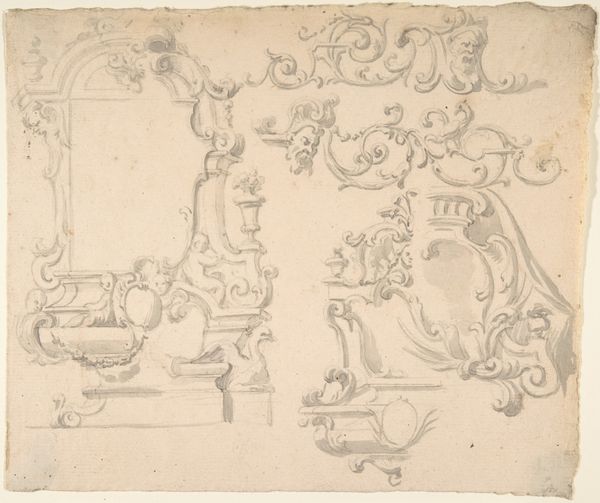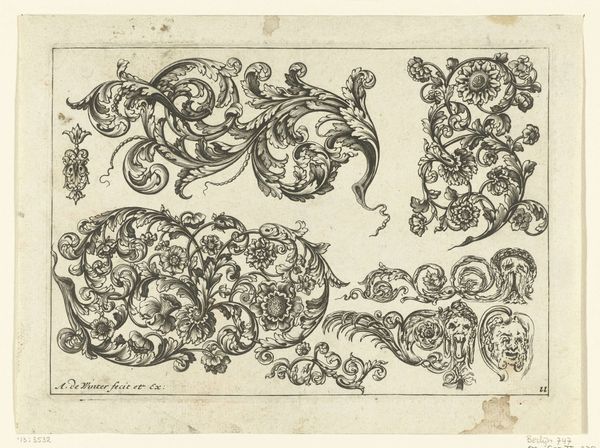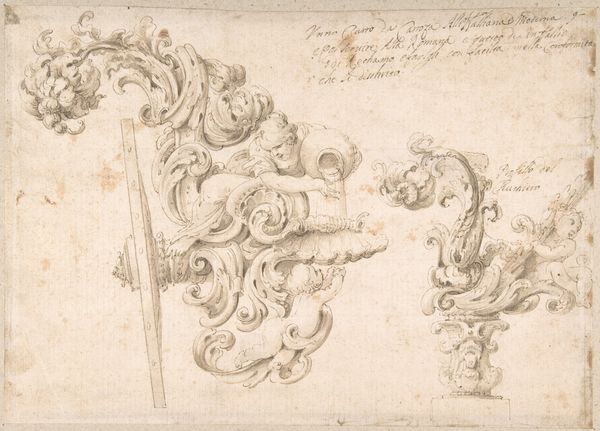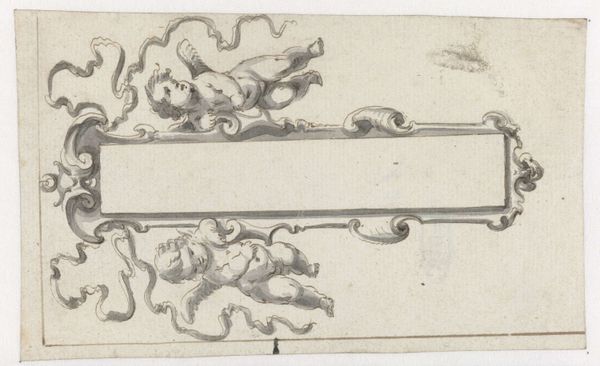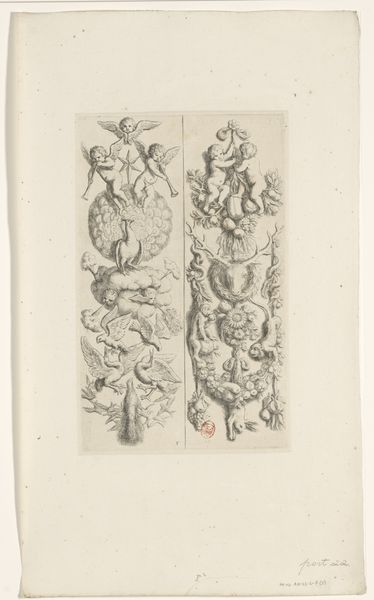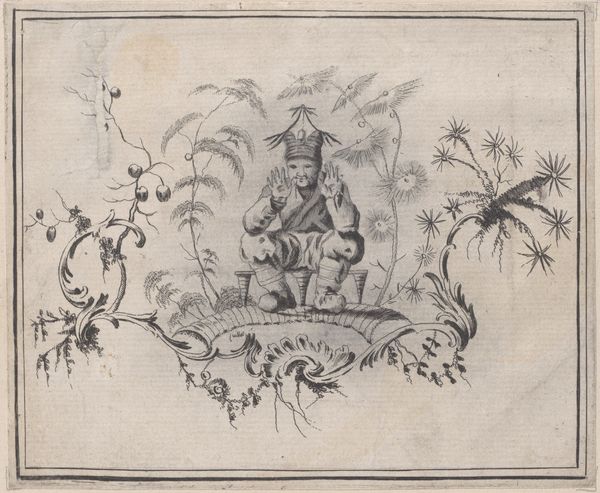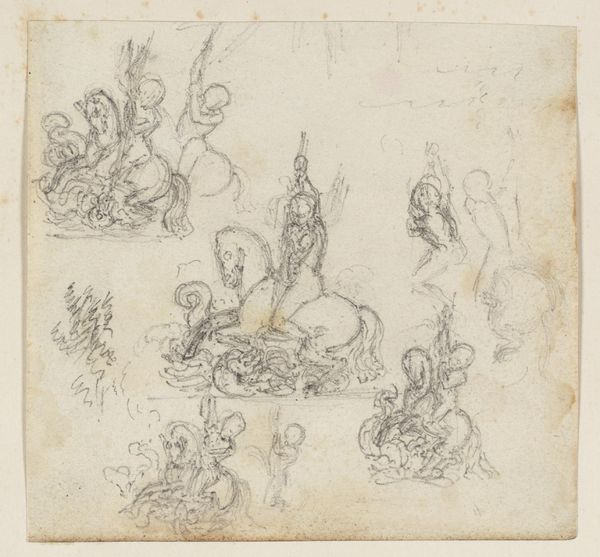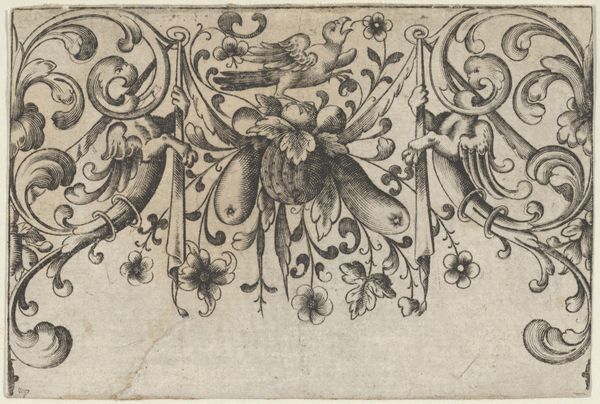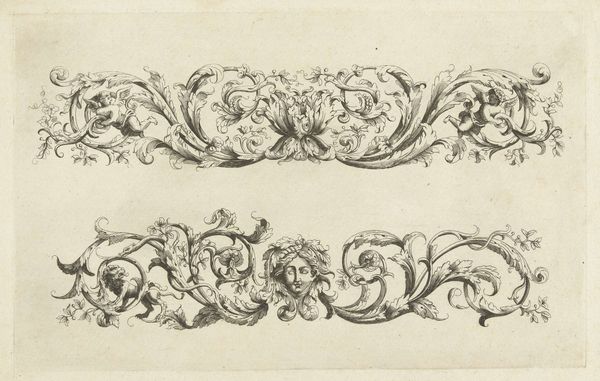
drawing, paper, ink
#
drawing
#
paper
#
ink
#
geometric
Dimensions: height 418 mm, width 290 mm
Copyright: Rijks Museum: Open Domain
Curator: Here we have Michel Liénard’s “Trophy and two vegetable friezes,” an ink drawing on paper from 1866. What is your immediate impression? Editor: Well, beyond its overt utilitarian nature, I’m drawn to the repetition, how the geometric renderings, meant for replication, seem strangely at odds with the organic, imperfect forms of the vegetables themselves. It hints at an anxiety over controlling nature, perhaps. Curator: I concur that tension is present, visible within the careful stippling and hatching. Consider how the friezes impose order; horizontals that seek to confine, whilst above and to the left the "trophy" implies both abundance and mastery, expressed as decoration. Editor: Exactly, the trophy aspect. Liénard, as an ornament designer, seems invested in showcasing process. It begs questions. Where was this ink sourced? What type of paper was utilized? Who benefits, or profits from this kind of image production meant for industry? Curator: The beauty of the object lies not just in those factors, which, undeniably contribute context; but also, fundamentally, within its graphic composition. Note how light is delineated through fine ink work—the rendering of depth in these forms, from squash to artichoke—is, to put it simply, marvelous. Editor: True, however it serves commerce. Consider its potential impact on labor practices. This design facilitates mass production, possibly deskilling craftspeople—taking design decision from their control in workshops or beyond. The industrial underpinnings are deeply embedded here. Curator: But without overlooking its own visual complexity, these patterns create something beautiful through geometrical rigor—transforming the mundane world of the garden into decorative architecture on the page. It becomes abstract! Editor: In ways. Liénard's artwork forces us to question the true costs of industrialized artifice, and how images influence production. Curator: Perhaps it asks how ornament and industrial method co-evolve. Regardless, I'll look at vegetables differently, next time, after thinking about their design possibilities. Editor: And, similarly, its commercial dimensions—never viewing art without asking: who is growing, producing and who is left out.
Comments
No comments
Be the first to comment and join the conversation on the ultimate creative platform.
